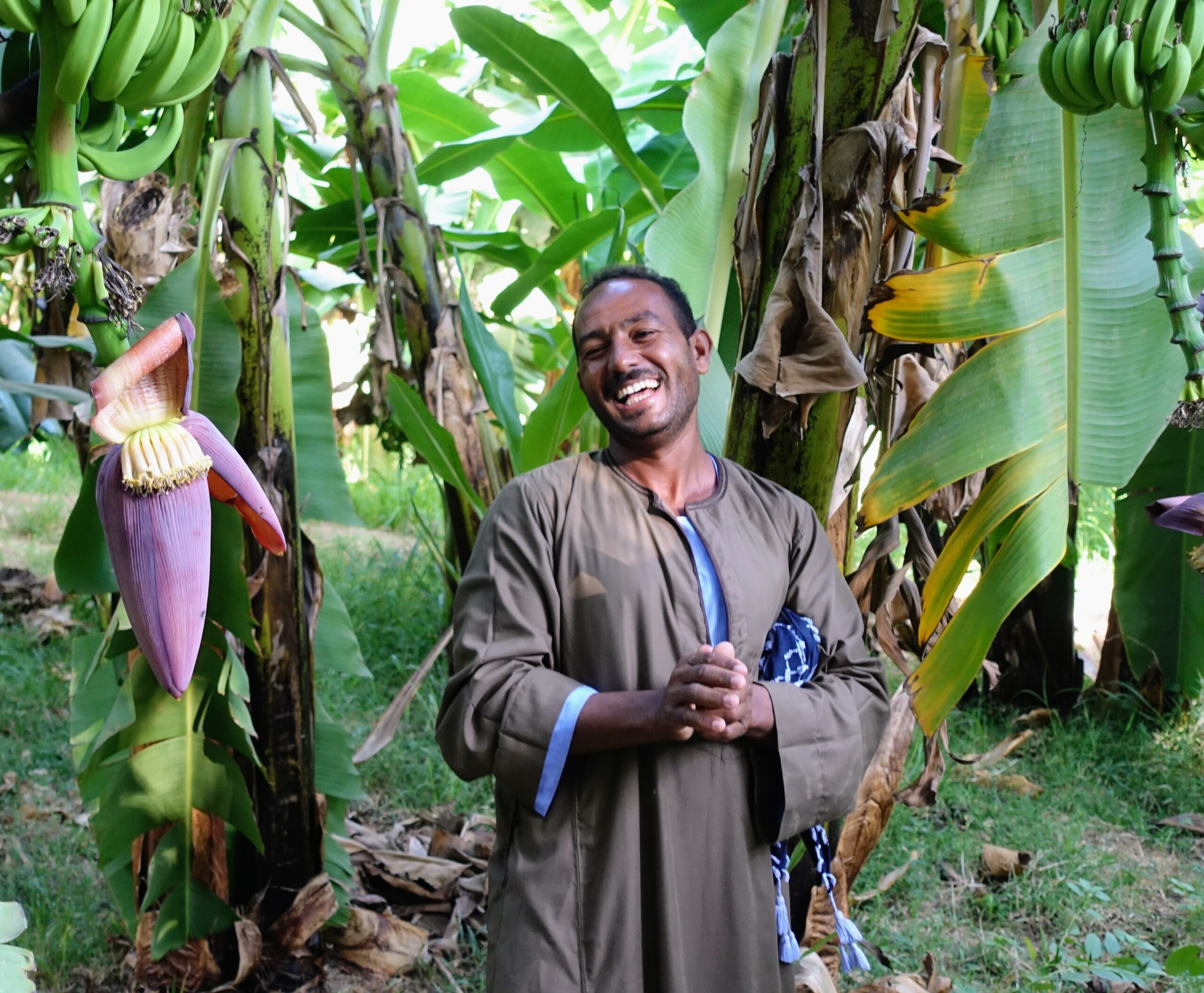On the banks of the Nile in southern Egypt, a gregarious farmer named Sayed welcomes the group of 16 Americans to his village on Besaw Island.
Near the shore, a man wearing a traditional long galabeya robe kneels and cuts green forage by hand as a shimmering white egret waits for seeds to drop to the ground. A fisherman glides by in a wooden rowboat flaked with green paint. Water buffaloes graze along the shore. Sayed leads the group along a dirt path into his village of 350 residents, explaining in English how he grows bananas, mangoes, tomatoes, potatoes and other produce.
“This feels like walking through the pages of a National Geographic magazine,” I tell my wife amid the lush banana and mango groves.
The island sits nearly 500 miles south of Cairo on land that was submerged by annual Nile floods for millennia before the 1970 completion of the Aswan Dam. Since then, water levels on the Nile north of the dam have been maintained at 25 or 30 feet — without the annual unpredictable inundations that caused the river to flood large areas along its banks. The Nile flows north from its origins in Ethiopia and Uganda through Egypt until it reaches the Mediterranean Sea at Alexandria.
Inside the large one-room school on Besaw Island, visitors see clusters of students separated by age groups, each with its own teacher. Despite the noise and commotion, the students and teachers seem focused. Several students studying English eagerly talk with the Americans.
Outside Sayed’s house, a traveler notes that the group had seen a man in a rowboat leading a water buffalo by rope across the Nile to graze in another pasture. “Why didn’t this water buffalo cross the river?” he asked. Sayed explains that she’s nine months pregnant, so swimming across the wide river isn’t possible now. Almost on cue, the water buffalo becomes agitated, grunting at the group. “She thinks you’re all vets because of the way you’re dressed,” Sayed said. “She thinks you’re going to give her shots.”

Sayed introduces some of his family and notes that his children are still in school. Someone asks how many children he has. “Two trouble-makers (boys) and one angel (girl).”
Inside his home, Sayed tells us that his wife and other female relatives bake sun bread twice a week in the wood-fired oven. Today’s a bread day! Each visitor takes a doughy loaf, places a long paddle on top, flips it over and slides it into the oven. Thankfully, no one drops one of the round loaves.
After a tour of the house, the group settles into the living room for fruit juice, tea and pieces of freshly baked bread.
We learn that a council of 10 men is elected to lead the island, resolving any disputes. Candidates must be at least 60 years old, Sayed explains, because men of that age are wiser and less prone to anger than younger men.
Medical care is available at a hospital about an hour away. Otherwise, Sayed and his fellow islanders live a sustainable life with the fish they catch year-round from the Nile plus the fruits, vegetables and grain that they harvest during two or three growing seasons each year. For our dinner later that evening, we will enjoy grilled Nile perch, caught earlier in the day by a fisherman from the island.
As the group boards our Egyptian wooden boat (known as a dahabiya) to continue exploring the Nile, Sayed waves from the shore. “I think you may be the Chief Troublemaker,” I shout from the boat, playing on his good humor and nickname for all young boys. “Not anymore,” he replies. “That’s when I was young.”
Sayed turns and walks back toward his home, his two troublemakers and angel, his wife and other family, his banana and mango groves, his vegetables, his pregnant water buffalo and a few hundred neighbors on an island that feels like a mirage frozen in an ancient time.
(Click any photo to enlarge it and start a slideshow.)


